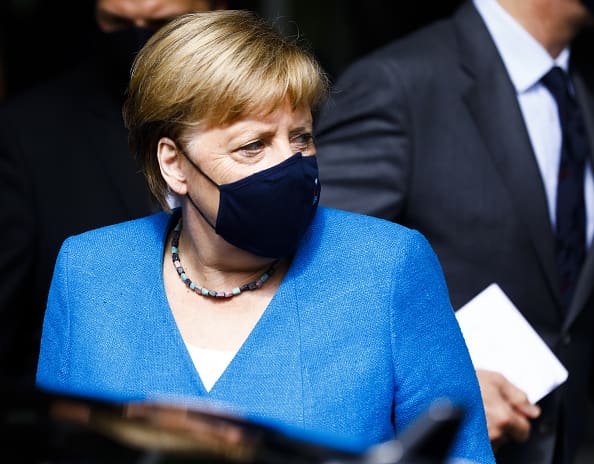Germany looks to tackle coronavirus rise with 3 simple strategies

German Chancellor Angela Merkel wears a protective face mask as she leaves after speaking to the media for her annual summer press conference during the coronavirus pandemic on August 28, 2020 in Berlin, Germany.
Anadolu Agency | Anadolu Agency | Getty Images
Chancellor Angela Merkel has vowed to avoid another full national lockdown as coronavirus infections begin to spike again in Germany.
Like its European neighbors, Germany has not been spared a second wave of the virus after the region’s economies reopened during the summer. Although, so far it has not seen a surge in cases like France, Spain and the U.K.
For instance, while the U.K. reported 7,143 new cases and 71 deaths from the virus Tuesday, Germany’s public health body reported 2,089 new cases and 11 fatalities.
Germany did not fare as badly in the first outbreak of the coronavirus compared to its neighbors, managing to limit deaths (there are still under 10,000 — far lower than the U.K. Italy, France and Spain). But officials are not complacent about a second wave of cases.
“We want to act regionally, specifically and purposefully, rather than shutting down the whole country again — this must be prevented at all costs,” Merkel told a news conference Tuesday having met with regional leaders, Deutsche Welle reported.
“We have learned a lot and did well throughout the summer,” Merkel said, but she warned that rising cases ahead of the fall and winter seasons were troubling.
She warned that with the current rate of infection, Germany could see more than 19,000 cases per day by the end of the year as she announced new restrictions, and reiterated existing guidance around social distancing and personal hygiene, as well as a strengthening of the country’s test-and-trace system.
Three elements
“The underlying strategy is still to keep infections low enough so that the tracing of infection chains remains possible, which is vital if schools and the economy are to remain open,” JPMorgan euro area economist Greg Fuzesi noted Tuesday.
He noted that the strategy has “three elements”: A refocusing on existing hygiene and distancing rules, the test-and-trace system and an enhancement of “the hotspot strategy.”
As part of the latter, regions will have to limit the number of people allowed at private parties (to 50) if infections exceed 35 per 100,000 inhabitants over seven days. If infections exceed 50 per 100,000 inhabitants then only 25 people will be allowed to meet at private functions. Individuals can also now be fined 50 euros ($58) if they provide false contact information, required for tracing purposes, at restaurants and other indoor establishments.
Particular attention is being paid to community spread in Germany, with public health body, the Robert Koch Institute, noting that religious or family events, such as weddings, as well as nursing homes and community facilities, have been sources of clusters of outbreaks, in addition to returning travelers. With this backdrop, Germany is beefing up its testing strategy to include rapid tests in certain situations, such as those for returning travelers.
Along with its European counterparts, Germany is reluctant to return to any national lockdown that could lead to further long-term economic damage. So far, European nations have opted for regional or very localized lockdowns, say in parts of northern England and Madrid in Spain, or early closures of hospitality venues and restrictions on social gatherings.
Holger Schmieding, chief economist at Berenberg, noted Wednesday that there are hopes that such behavioral changes, like an adherence to wearing face masks and more disciplined social distancing, along with more targeted restrictions “will suffice to turn the tide against the virus and prevent a widespread overburdening of health systems that could otherwise force countries to impose much harsher lockdowns again.”
“The new wave of regional and targeted measures across much of Europe restrict social activity rather than the ability to work and shop,” he noted.




